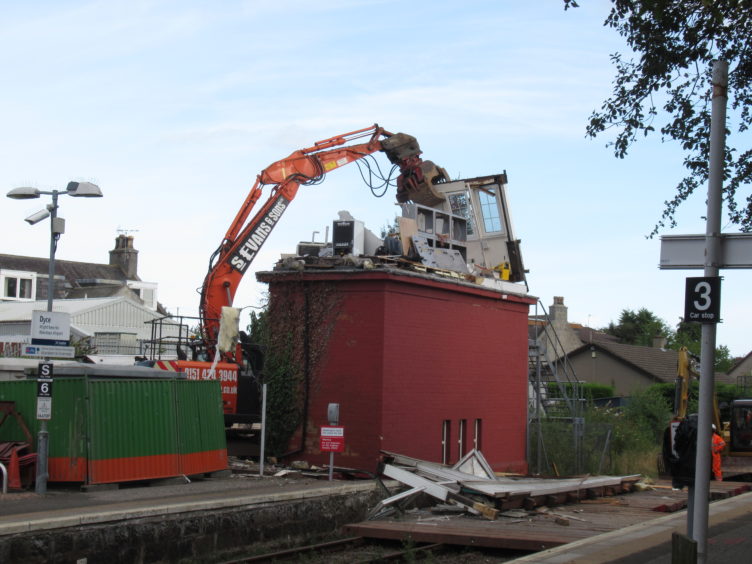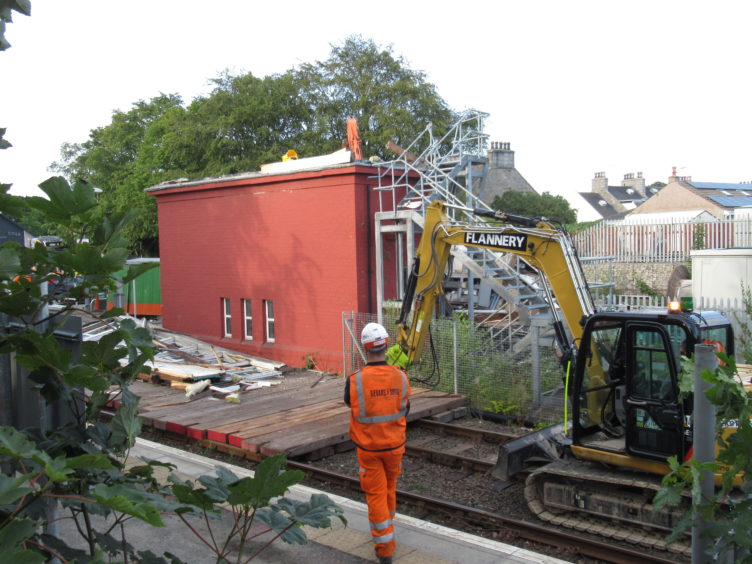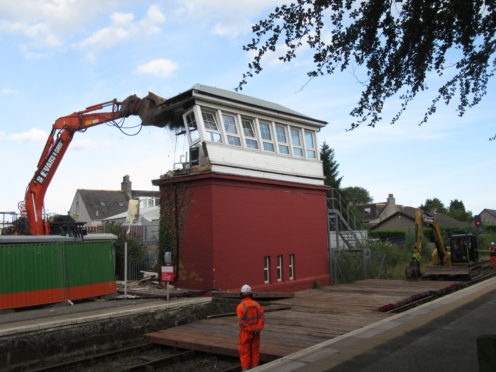It has been one of the most visible signs of the great Victorian age of steam for well over a century in the north east.
And it dates back to the pre-Beeching days when almost every community was close to the many picturesque stations which were dotted around the north of Scotland.
But yesterday a historic signal box at Dyce, dating back to the 1890s, was demolished in less than 90 minutes as the curtain fell on a vintage chapter of railway lore.
The building, which was originally created to control the busy junction of the main line to Elgin and the Buchan section of the Great North of Scotland railway, was flattened with metronomic precision and modern technology by the contractors S Evans and Sons of Widnes in Cheshire.

They needed only the length of a football match to dismantle the old structure.
The original box was modernised in 1928 and then, about twelve years ago, was converted from the traditional lever frame into an electronic panel.
However, it has been decided to replace the existing arrangements and signalling in the area will be controlled from Inverness in the future.
The line is currently closed to allow the work to be carried out, but it’s hoped the new system will be up and running shortly
North-east railway aficionado Keith Jones, who has a keen interest in the history of rail, said last night that he had mixed emotions about the demolition of the 120-year-old structure.

Mr Jones, a member of the Great North of Scotland Railway Association, added: “I am always sad to see 19th-century railway heritage disappear.
“It is unfortunate that another use could not have been found for the signal box, but it was not easily adaptable to any other purpose.
“And, in the context of the major railway infrastructure upgrade which is currently taking place between Aberdeen and Inverurie and which will bring big benefits to rail users, it is perhaps a worthwhile sacrifice.”
